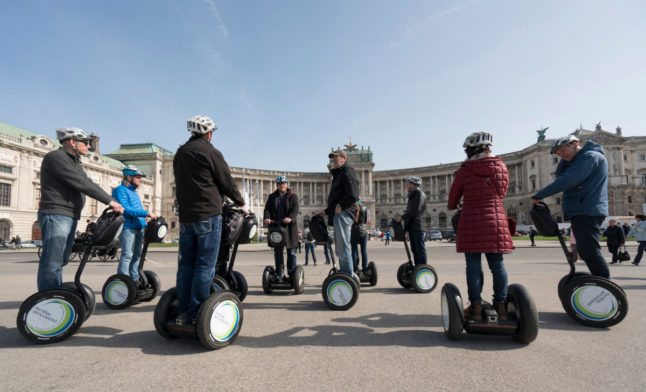Train travel is a safe and relatively comfortable way to get around Austria, but there is still much to do to make these journeys better for travellers, especially for commuters.
In Austria, the operator ÖBB expects an even higher surge in the next few days, during Christmas and New Year’s holidays, especially since some trains had to be put in maintenance mode after damages caused during snowstorms. This has led to several journeys being overcrowded, with people travelling standing up or being removed from trains when they reach capacity and the number of people compromises safety.
READ ALSO: Half-price Europe train tickets on offer in Interrail flash sale
Why are trains overcrowded?
There are several reasons for the surge in train travel, but they boil down to three things: fewer trains in operation, rising costs for other means of transportation and environmental worries.
With galloping inflation, Austrians have seen prices of fuel climbing, and as the war in Ukraine continues, there is no likelihood of lower petrol prices any time soon.
At the same time, since last year, Vienna (the destination for many domestic tourists and commuters) has instituted a new short-term parking system, basically removing free parking in the streets of the capital.
Driving has become more expensive when everything else seems to be costly, and many Austrians turn to train travel. Particularly for those who are holders of the Klimaticket, a yearly subsidised card that allows for unlimited travel for just over €1,000 – early buyers could get a hold of the ticket for under €900.
READ ALSO: Nine German expressions that perfectly sum up spring in Austria
The ticket allows travellers to “hop on and hop off” as they wish, making occupancy more unpredictable. However, it is possible to reserve seats even if you have them, and there are low-budget bundles for commuters.
The Klimaticket was created in an effort with the Environmental Ministry, looking to increase the use of greener transport alternatives in Austria.
The environmental concern is also one of the reasons why train travel is on the rise globally – travelling by train is also more convenient in many cases, with comfortable seats, free wifi, a dining area and the fact that you can start and end your journey in central stations instead of far-away airports.
READ ALSO: OPINION: Trains are in fashion so why is rail travel across Europe still so difficult?
Why won’t ÖBB only sell as many tickets as there are train seats?
A reasonable question, but that is not possible with the way train journeys operate in Austria – and in most countries.
Some tickets are “open” and flexible, meaning that people can board any train from a specific time. These are particularly useful for commuters who might be late leaving work, for example.
Additionally, holders of the Klimaticket and other regional yearly offers don’t need to buy tickets. They only need to show their Klimaticket card with an ID once checked.
READ ALSO: Austria’s nationwide public transport ‘climate ticket’ now available
What can I do to guarantee my journey?
The best way to try and guarantee your journey, according to ÖBB, is by reserving a seat.
READ ALSO: One day in Vienna: How to spend 24 hours in the Austrian capital
“A seat reservation is the best way to use the most popular train connections. Starting at €3, you can reserve a seat in ÖBB trains in Austria”.
Reservations are available online at tickets.oebb.at the ÖBB app, at the ÖBB ticket counter, and at the ÖBB customer service at 05-1717.




 Please whitelist us to continue reading.
Please whitelist us to continue reading.
Member comments